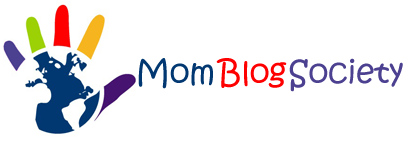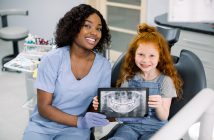Your nose is your body’s natural filter—it traps dust, allergens, bacteria, and other particles before they can enter your lungs. But just like any filter, it sometimes needs a little maintenance. Learning how to clean your nose properly is important not only for comfort but also for overall health. Whether you’re dealing with allergies, a cold, or simply trying to improve your breathing, safe nasal care can make a big difference.
While adults can usually manage their own nasal hygiene, children and babies may need extra help. Tools like a nasal aspirator are especially useful for little ones who can’t blow their nose effectively yet. This guide will walk you through when and why to clean your nose, the best methods for safe nasal care, and when it’s time to consult a doctor.
When and Why You Should Clean Your Nose
Your nose naturally produces mucus to trap dust, germs, and other irritants. While this is a healthy function, sometimes mucus can build up, causing discomfort and breathing difficulties. Common reasons to clean your nose include:
- Colds and flu: Thick mucus can block nasal passages, making it harder to breathe.
- Allergies: Pollen, dust, and pet dander often cause excess mucus production.
- Dry environments: Lack of humidity can dry out nasal passages, leading to crusting.
- Post-surgery or sinus issues: Doctors often recommend nasal rinses to support healing and reduce infection risk.
Regularly cleaning your nose helps clear irritants, promotes better airflow, and may even reduce the frequency of infections.
Using Saline Sprays and Rinses
One of the safest and most effective ways to clean your nose is with saline. Saline sprays and rinses mimic the natural salt concentration of your body fluids, making them gentle yet effective at loosening mucus and clearing nasal passages.
- Saline sprays: Convenient for quick use, especially when you’re on the go.
- Saline rinses (neti pot, squeeze bottle): Provide a more thorough cleanse by flushing mucus and allergens from the nasal cavity.
When using saline solutions, make sure to use sterile, distilled, or previously boiled water to avoid infections. Many pharmacies sell ready-made saline sprays, or you can make your own at home using distilled water, non-iodized salt, and baking soda.
The Proper Technique for Nasal Irrigation
Nasal irrigation can feel intimidating, but with the right technique, it’s simple and highly effective. Here’s a step-by-step guide:
- Wash your hands thoroughly.
- Prepare your saline solution or use a store-bought rinse.
- Lean over a sink and tilt your head slightly to one side.
- Insert the spout of the neti pot or squeeze bottle into the upper nostril.
- Gently pour or squeeze the solution, allowing it to flow through your nasal cavity and out the other nostril.
- Repeat on the opposite side.
- Blow your nose gently to clear out any remaining solution and mucus.
This process not only clears congestion but also removes allergens and irritants, making it a great routine for allergy sufferers.
Gentle Blowing for a Clear Nose
Blowing your nose seems straightforward, but doing it incorrectly can actually make congestion worse. If you blow too hard, mucus can be forced into the sinuses or middle ear, increasing the risk of infection.
Tips for safe nose blowing:
- Blow one nostril at a time to reduce pressure.
- Use soft tissues to avoid irritating the skin around your nose.
- Avoid repeated, forceful blowing. Instead, use saline rinses to loosen stubborn mucus.
For children who are old enough, teaching gentle blowing can prevent complications while helping them feel more comfortable.
The Role of Steam and Humidifiers
Moisture plays a huge role in nasal health. Dry air can make mucus thicker and harder to clear, while moist air helps keep nasal passages lubricated.
- Steam inhalation: Sitting in a steamy bathroom for 10–15 minutes or inhaling steam from a bowl of hot water (carefully, to avoid burns) can loosen congestion.
- Humidifiers: Keeping a cool-mist humidifier in your bedroom adds moisture to the air, making it easier to breathe, especially during winter or in dry climates.
- Warm showers: Not only relaxing, but also an effective way to clear nasal passages.
By keeping your environment humid, you reduce irritation and make cleaning your nose easier and more effective.
Special Considerations for Toddlers and Babies
Young children often struggle with nasal congestion but can’t clear their noses on their own. This is where parents need to step in with safe methods.
- Saline drops: A few drops in each nostril help loosen mucus.
- Nasal aspirator: A nasal aspirator gently suctions out mucus after saline drops are applied.
- Gentle positioning: Hold your baby upright to help drainage and make breathing easier.
- Frequent checks: Babies are obligate nose breathers, so even mild congestion can disrupt feeding and sleep.
Always use gentle, age-appropriate tools, and avoid giving toddlers and babies over-the-counter decongestants, which can be unsafe at this age.
Avoiding Common Mistakes
While learning how to clean your nose, it’s important to avoid practices that can cause harm or reduce effectiveness:
- Using tap water for rinses: Always use distilled, boiled, or sterile water to prevent infections.
- Overusing sprays: Saline sprays are safe, but medicated decongestant sprays can cause rebound congestion if used for more than 3 days.
- Excessive suctioning in babies: Too much suction can irritate nasal tissues; use sparingly and only when needed.
- Forgetting hygiene: Clean your nasal devices regularly to avoid introducing bacteria.
By being mindful of these mistakes, you’ll keep nasal care safe and beneficial.
Recognizing When to Seek Medical Advice
Most nasal congestion can be managed at home, but sometimes professional care is needed. See a doctor if you experience:
- Persistent congestion lasting more than 2 weeks
- Severe facial pain or swelling
- Bloody discharge or recurring nosebleeds
- Fever along with nasal symptoms
- Breathing difficulties in infants or toddlers
These symptoms could indicate sinus infections, allergies requiring treatment, or other underlying issues. Early medical attention ensures the problem doesn’t worsen.
Final Thoughts
Knowing how to clean your nose properly is a simple yet powerful way to support better breathing, prevent infections, and improve overall health. From saline rinses and steam therapy to using a nasal aspirator for babies, there are safe methods for every age and situation.
By practicing good nasal hygiene, you’ll find relief from congestion, reduce exposure to allergens, and support your immune system. Whether you’re helping your child breathe easier or managing your own allergies, proper nose-cleaning techniques can make a world of difference.





I just now began to dive into the world of gambling and I can say that with romania online casinos I do it much easier and more comfortable. I am already used to playing here. The interface is attractive and clear to me. For me the most important thing has always been that I was able to understand what and how it works.
I just now began to dive into the world of gambling and I can say that with romania online casinos I do it much easier and more comfortable. I am already used to playing here. The interface is attractive and clear to me. For me the most important thing has always been that I was able to understand what and how it works.